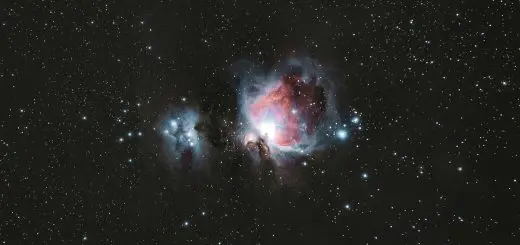Ninhursag: Mother Goddess and Healer

Looking for more amazing products? Check out our online store and explore our collection here! Happy shopping!
Before diving in, please note: This post is for informational purposes only. If you’d like to know more about how we approach topics, feel free to check out our friendly Disclaimer Page.
Hey there, amazing readers! 
We’re committed to delivering quality posts, and your support (even just sticking around despite the ads) means everything to us. So, bear with us, and thanks for helping us keep the good vibes rolling. Now, on to the fun stuff!
TRANSLATE BUTTON AT THE END OF THE ARTICLE
Ninhursag: Mother Goddess and Healer
Overview
Ninhursag, also known as Ninmah or Nintu, is a prominent deity in ancient Mesopotamian mythology.
As a mother goddess and healer, she played a vital role in the pantheon of gods worshipped by the Sumerians and later Babylonians and Assyrians.
Ninhursag was revered as the goddess of fertility, childbirth, and agriculture, and her healing powers were sought by those in need of physical and spiritual nourishment.
This article delves into the various aspects of Ninhursag’s character and explores her influence on ancient Mesopotamian society, as well as her lasting legacy in modern interpretations and worship.
Introduction to Ninhursag, an Ancient Mesopotamian Deity
Ninhursag, whose name translates to "Lady of the Foothills," was one of the most revered deities in the ancient Mesopotamian pantheon.
She was primarily worshipped by the Sumerians, who inhabited the region between the Tigris and Euphrates rivers.
Ninhursag was often depicted as a nurturing mother figure with a prominent role in the creation of humanity.
Her character and attributes evolved over time, but her association with fertility, healing, and agriculture remained consistent throughout ancient Mesopotamian history.
The Role of Ninhursag in Mesopotamian Mythology
In Mesopotamian mythology, Ninhursag played a crucial role in the creation of both gods and humans.
According to the myth known as "Enki and Ninhursag," she was the mother of the gods and the creator of mankind.
In this story, Ninhursag created humans from clay and breathed life into them, establishing her as the divine mother and nurturer of all living beings.
She was also revered as the mother of all plants and animals, symbolizing her role in sustaining life on Earth.
Ninhursag’s Importance as the Mother Goddess
Ninhursag’s role as the mother goddess held significant importance in ancient Mesopotamian society.
As the divine mother, she was believed to protect and nurture her children, both gods, and humans alike.
Ninhursag was often invoked in prayers and rituals seeking fertility, safe childbirth, and abundant harvests.
Her association with motherhood and fertility made her a vital figure in the lives of ancient Mesopotamians, who depended heavily on agriculture for their survival.
Ninhursag’s Healing Powers and Connection to Fertility
Ninhursag was renowned for her healing powers and connection to fertility.
She was believed to possess the ability to cure various ailments and diseases, making her a revered goddess of healing.
Women seeking fertility and safe childbirth would often turn to Ninhursag for aid and blessings.
Additionally, she was associated with the rejuvenation of the land and the growth of crops, further solidifying her role in sustaining life and ensuring the prosperity of civilization.
Ancient Rituals and Offerings to Honor Ninhursag
To honor and gain favor from Ninhursag, ancient Mesopotamians performed various rituals and made offerings at her temples.
These rituals often included prayers, chants, and the burning of incense.
Offerings of food, drink, and flowers were also made to the goddess, symbolizing gratitude and seeking her blessings for fertility, healing, and a bountiful harvest.
Priests and priestesses, known as en or entu, played a crucial role in conducting these rituals and acting as intermediaries between the mortal realm and the divine.
Ninhursag’s Symbolism: Depictions and Representations
Ninhursag was typically depicted as a nurturing and life-giving figure in Mesopotamian art.
She was often shown with multiple breasts, symbolizing her role as the mother goddess and her ability to provide nourishment to all living beings.
Sometimes, she was portrayed holding a staff or a plant, representing her connection to agriculture and healing.
The serpent, a symbol of wisdom and healing, was also associated with Ninhursag, emphasizing her divine powers of rejuvenation and restoration.
Ninhursag’s Influence on Medicine and Healing Practices
Ninhursag’s association with healing had a profound influence on ancient Mesopotamian medicine and healing practices.
Medical texts from this era, such as the famous "Diagnostic Handbook," contain references to Ninhursag and her healing abilities.
These texts provide insights into various diseases, symptoms, and treatments, many of which were believed to be inspired by the goddess herself.
Ninhursag’s influence on medicine extended to surgical procedures and herbal remedies, showcasing her enduring legacy in the field of healing.
Historical Sites and Temples Dedicated to Ninhursag
Throughout Mesopotamian history, numerous temples and shrines were dedicated to Ninhursag.
One notable site is the temple complex of Eanna in the city of Uruk, where a sanctuary dedicated to the goddess was discovered.
Another significant temple associated with Ninhursag is the complex of Ninhursag’s Abzu in the city of Eridu, which was believed to be the home of Enki, her divine consort.
These sacred sites served as centers of worship and pilgrimage, allowing devotees to connect with Ninhursag and seek her blessings.
The Relationship Between Ninhursag and Enki
Ninhursag’s relationship with Enki, the god of wisdom and water, played a significant role in Mesopotamian mythology.
According to myths, Ninhursag and Enki were both involved in the creation of humanity.
Their relationship was often depicted as a harmonious and creative partnership, where they worked together to bring life and sustenance to the world.
However, like many divine relationships, their story also contained elements of conflict and separation, adding depth and complexity to their roles in Mesopotamian mythology.
Ninhursag in Modern Interpretations and Worship
While worship of the ancient Mesopotamian deities declined with the rise of other religions, Ninhursag’s legacy continues to resonate in modern interpretations and worship.
In recent years, there has been a revival of interest in ancient Mesopotamian mythology and the goddess herself.
Modern practitioners of paganism and neopaganism have incorporated Ninhursag into their pantheons, honoring her as a powerful and nurturing deity.
Additionally, scholars and enthusiasts of ancient history continue to study and explore Ninhursag’s role in Mesopotamian civilization, ensuring her story and significance are not forgotten.
Conclusion: The Enduring Legacy of Ninhursag
Ninhursag, the mother goddess and healer of ancient Mesopotamia, holds a lasting legacy that spans centuries.
Her association with fertility, healing, and agriculture made her a central figure in the lives of the Sumerians and subsequent civilizations in the region.
Through her nurturing and life-giving qualities, she provided a sense of comfort and support to ancient Mesopotamians.
Today, Ninhursag’s influence can still be felt in modern interpretations of her character and worship, ensuring that her legacy endures in the realms of mythology, religion, and history.

The Enlightenment Journey is a remarkable collection of writings authored by a distinguished group of experts in the fields of spirituality, new age, and esoteric knowledge.
This anthology features a diverse assembly of well-experienced authors who bring their profound insights and credible perspectives to the forefront.
Each contributor possesses a wealth of knowledge and wisdom, making them authorities in their respective domains.
Together, they offer readers a transformative journey into the realms of spiritual growth, self-discovery, and esoteric enlightenment.
The Enlightenment Journey is a testament to the collective expertise of these luminaries, providing readers with a rich tapestry of ideas and information to illuminate their spiritual path.
Our Diverse Expertise
While our primary focus is on spirituality and esotericism, we are equally passionate about exploring a wide range of other topics and niches 

To ensure we provide the most accurate and valuable insights, we collaborate with trusted experts in their respective domains 
Our blog originally focused on spirituality and metaphysics, but we’ve since expanded to cover a wide range of niches. Don’t worry—we continue to publish a lot of articles on spirituality! Frequently visit our blog to explore our diverse content and stay tuned for more insightful reads.
Hey there, amazing reader! 
Check out our store here and take a peek at some of our featured products below! Thanks for being awesome!













